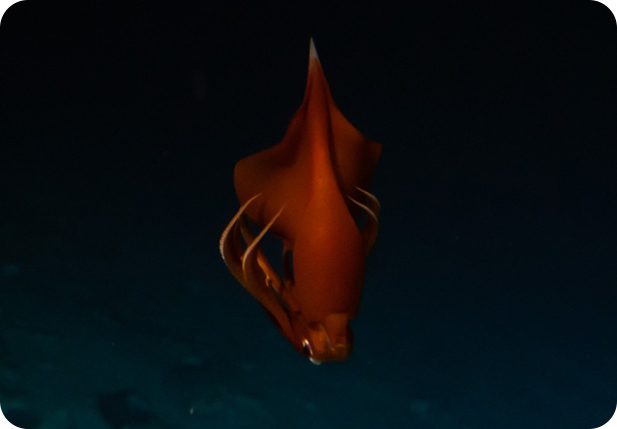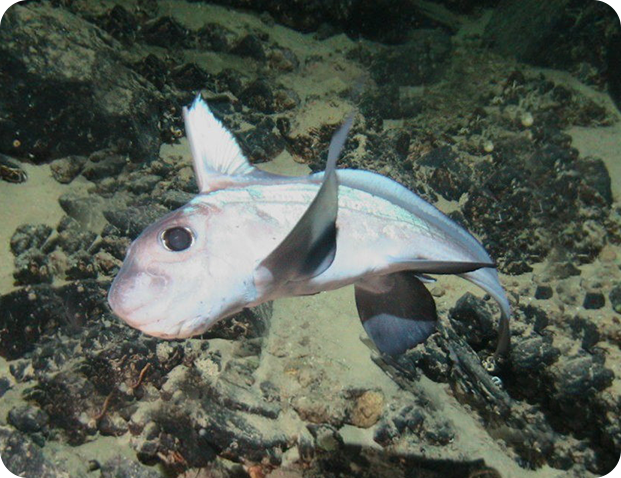
Beyond the depth of 300 feet (90 meters) plants cease to grow. Though sunlight will penetrate to depths of 2000 feet, (610 meters) it is not intense enough past 300 feet for plants to engage in photosynthesis (except one type of red algae). Therefore, the depth which Idabel explores is solely populated by animal life.
The animals at these depths have undergone many strange adaptations. Some are blood-red, as red light (the shortest wavelength of light) is completely absorbed in these waters. Others are translucent or shiny like a mirror. Still others make their own light— even some corals and sponges glow from their own bioluminescence.

Others animals give us a rare glimpse back in time. For example, the sea lillies— spotted on each submarine dive but only surviving below 500 feet (150 meters)— have remained unchanged in their stable environment for some 230 million years (over half the time that there has been life on the planet).
At 1800 feet (550 meters), light fades into perpetual darkness. In this inky abyss where the water temperature hovers only a few degrees above freezing, the truly strange animals take over. Fish are equally likely to stand on their heads or point straight up as they are to swim. Six-gill sharks with no dorsal fins grow to 20 feet (6 meters). Tripod fish, polka-dotted angler fish, and free-swimming sea cucumbers start to appear.
On almost every dive something new to Captain Karl Stanley is encountered, many of which cannot be identified in any books. Our deepsea expeditions are truly a once-in-a-lifetime opportunity to come face-to-face with the alien inhabitants of this forbidden realm; reserve your expedition now!